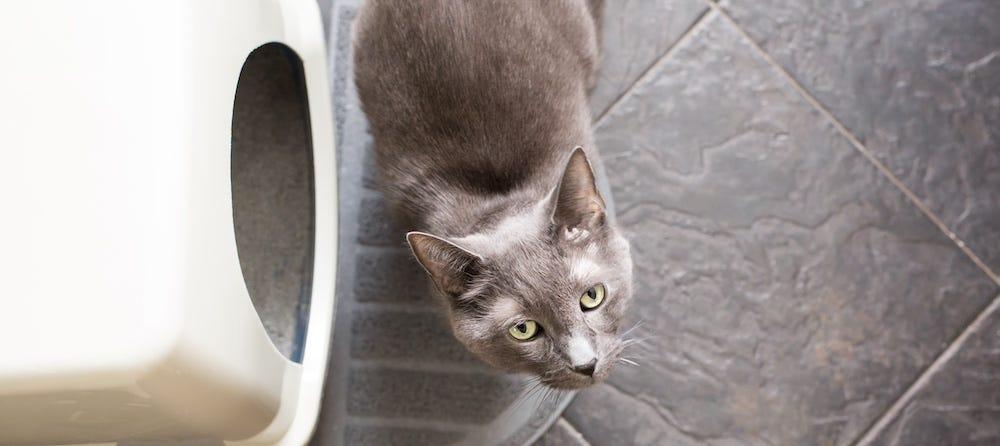It’s been over a year now, and I still get a knot in my stomach when I think of the time my cat, Olivia, made her great escape.
Both of my cats are exclusively indoor kitties, so the thought of either of them ever going missing wasn’t high on my mind. However, one evening while we were grilling in the back yard, Olivia, who had never shown any interest in going outside before, decided that she wanted to get a taste of the great outdoors. Somehow, our furry little explorer managed to slip out through an open patio door undetected.
She tends to keep to herself a bit, so we didn’t think anything of it when we didn’t see her that evening. It wasn’t until the following morning that we realized that she wasn’t in the house. You can imagine the panic that ensued!
Thankfully, Olivia hadn’t gone far. Her outdoor adventures had only taken her as far as a cozy hiding spot under our deck. She emerged quite willingly when she heard us shaking the treat bag!
I’m so relieved that my own wandering cat story had a happy ending. But it doesn’t turn out that way for far too many kitties who go missing. In fact, according to one estimate, only about 2% of cats who are reported missing ever find their way back to their families.
Only about 2% of cats who are reported missing ever find their way back to their families.
That’s a pretty sobering thought. Thankfully, though, there are ways that cat parents can protect their favorite felines from becoming a lost pet statistic.
Why Cats Go Missing
It makes sense that cats who spend time outdoors are far more likely to become a lost pet. But, surprisingly, although they do pose a real danger, predators and vehicles are not the most likely culprits when it comes to missing cats. More often than not, kitties become lost when they’ve explored their way into a situation they can’t get themselves out of. Maybe they’ve climbed a little too high up in a tree or dropped onto a roof and can’t climb down.
Most cats confine their exploring to within a 5-house radius. This is good news if you find yourself having to search for a missing kitty. Chances are, your little wanderer hasn’t gone too far. However, don’t limit your search to the area immediately surrounding your home. It’s a good idea to put up posters and check with shelters within 60 miles of your home.
Occasionally, cats will climb into a car or a box that is being transported and will find themselves unwitting passengers on a journey that takes them some distance from home. In these situations, hopefully the unsuspecting driver will discover them before they have a chance to slip out and will take steps to return them. If not, ID tags are your best chance at getting your kitty back safely. See my comments below about my favorite tag.
If your cat has become injured, instinct will tell him to hide somewhere safe. If this happens, the injured kitty is likely somewhere nearby, but he may be difficult to find. However, locating him is especially important if he is in need of medical attention.
Four Ways to Protect Your Cat
The best way to protect your cat from becoming a lost pet is to take steps to keep him or her from getting lost in the first place.
It's a good idea to keep cats indoors. Some statistics show that indoor cats are healthier and live longer (much longer) than outdoor cats. If your cat must go outdoors, you should provide some type of enclosure for protection.
Even after taking precautions, indoor cats may still end up far from home if they have the opportunity to slip outside (like Olivia did), or if an emergency situation, such as a natural disaster, occurs.
It’s important to take the following precautions to keep your cat safe:
- Don't leave doors or windows open or ajar.
It only takes a second for a kitty to slip out and get lost!
- Make sure your cat wears an external ID tag.
PetHub is my favorite form of physical ID tag because it's a "smart tag." It links to an online profile with contact and medical information. Combine this with a breakaway collar so kitty can free himself if the collar becomes caught.
- Microchip your cat.
This is a great backup if your cat’s collar comes off, but don't count on it as your sole form of kitty ID. A tag on the collar will get your cat home faster and without a good Samaritan having to take your cat to a location (vet or shelter) where the microchip can be read! Not to mention, some people are hesitant to pick up a cat without a collar, thinking that it could be a stray.
- Travel safely with your cat.
Sometimes cats escape from a carrier that wasn’t securely fastened shut—especially if they associate the carrier with someplace they don’t like (like the vet). If you need to leave the house with your cat, don’t give him any opportunity to make a break for it!
The key to getting a lost cat home as quickly as possible is prevention. Follow these tips ahead of time and, even if your kitty’s inner escape artist comes out, you’ll have the best chance of seeing him returned safely.
Guest post by Kristen Levine Pet Living, the place for stories, science & advice for living happier and healthier with pets.




